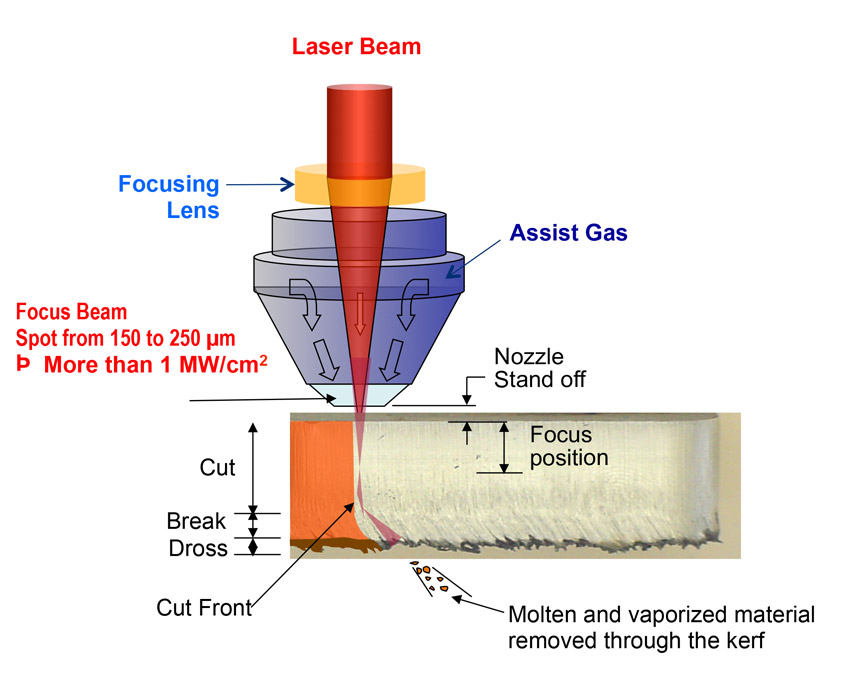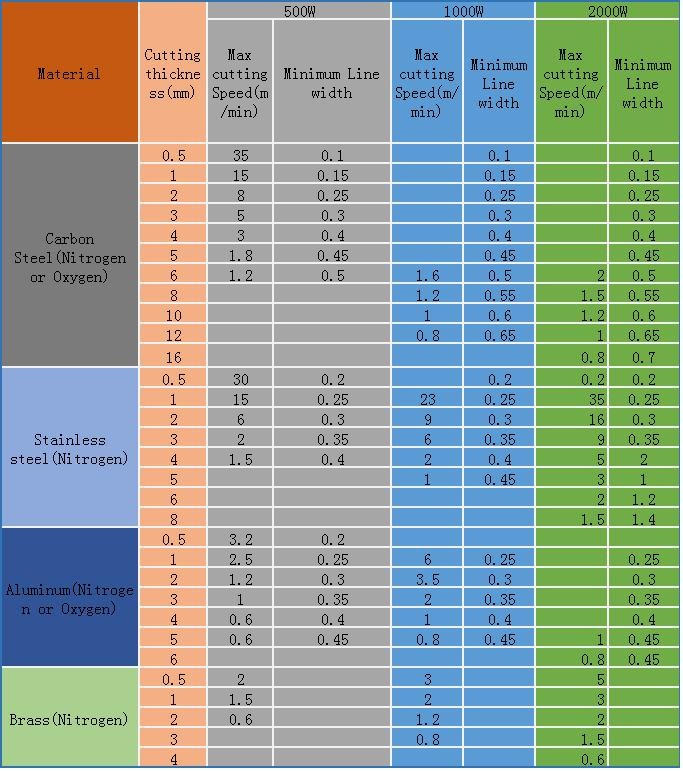How to configure the process parameters of laser cutting machine?
Laser cutting machine is to replace the traditional mechanical knife with an invisible beam. It has the characteristics of high precision, fast cutting, not limited to the cutting pattern, automatic typesetting, saving material, smooth cutting, and low processing cost. It will gradually improve or replace the traditional metal cutting process equipment. The mechanical part of the laser cutter head has no contact with the workpiece, and will not scratch the surface of the workpiece during work; the laser cutting speed is fast, the incision is smooth and flat, and generally does not need subsequent processing; the cutting heat affected zone is small, the plate deformation is small, and the slit (0.1 mm~0.3mm); the incision has no mechanical stress, no shearing burrs; high processing accuracy, good repeatability, and no damage to the surface of the material; CNC programming, can process any plan, and can cut the entire board with a large format without opening Mould, economical and time-saving.

Laser cutting equipment composition
Laser cutting machine is mainly composed of fiber laser source, light guide system, numerical control motion system, automatic height adjustment cutting head, working platform and blowing high pressure gas system. Many parameters will affect the quality of laser cutting process, some of which depend on the technical performance of the laser and machine tool, while other parameters are variable. The main parameters of laser cutting are:
1. Beam mode
Fundamental mode, also known as Gaussian mode, is the most ideal mode for cutting, mainly in low-power lasers with power less than 1KW. Multi-mode is a mixture of higher-order modes. Under the same power, multi-mode has poor focus and low cutting ability. The cutting ability and cutting quality of single-mode laser is better than that of multi-mode.
2. Laser power
The laser power required for laser cutting mainly depends on the cutting material, material thickness and cutting speed requirements. The laser power has a great influence on the cutting thickness, cutting speed, and incision width. Generally, with the increase of laser power, the thickness of the material that can be cut also increases, the cutting speed increases, and the width of the cut is also increased.

3. Focus position
The focal position has a greater influence on the width of the incision. Generally, the focal point is located at about 1/3 of the plate thickness below the surface of the material, where the cutting depth is the largest and the mouth width is the smallest.
4. Focal moment
When cutting thick steel plates, a beam with a longer focal moment should be used to obtain a cutting surface with good verticality. The focal depth is large, the spot diameter also increases, and the power density decreases accordingly, which reduces the cutting speed. To maintain a certain cutting speed, it is necessary to increase the laser power. It is advisable to use a beam with a smaller focal length for cutting thin plates, so that the spot diameter is small, the power density is large, and the cutting speed is fast.
5. Auxiliary gas
The cutting of low carbon steel mostly uses oxygen as the cutting gas to use the iron-oxygen combustion reaction heat to promote the cutting process, and the cutting speed is fast, the cut quality is good, and a slag-free cut can be obtained. The pressure increases, the kinetic energy increases, and the slag discharge capacity increases; the size of the cutting air pressure is determined by the factors of material, plate thickness, cutting speed and cutting surface quality.
6. Nozzle structure
The structure and shape of the nozzle and the size of the light outlet also affect the quality and efficiency of laser cutting. Different cutting requirements choose different nozzles. Commonly used nozzle shapes are: cylindrical, cone, square and other shapes. Laser cutting generally adopts a coaxial (air flow and optical axis concentric) blowing method, if the air flow and the optical axis are not coaxial, then a lot of splashes are likely to be generated during cutting. In order to ensure the stability of the cutting process, it is usually necessary to control the distance between the nozzle end face and the surface of the workpiece, generally 0.5 to 2.0 mm, so that the cutting can proceed smoothly.